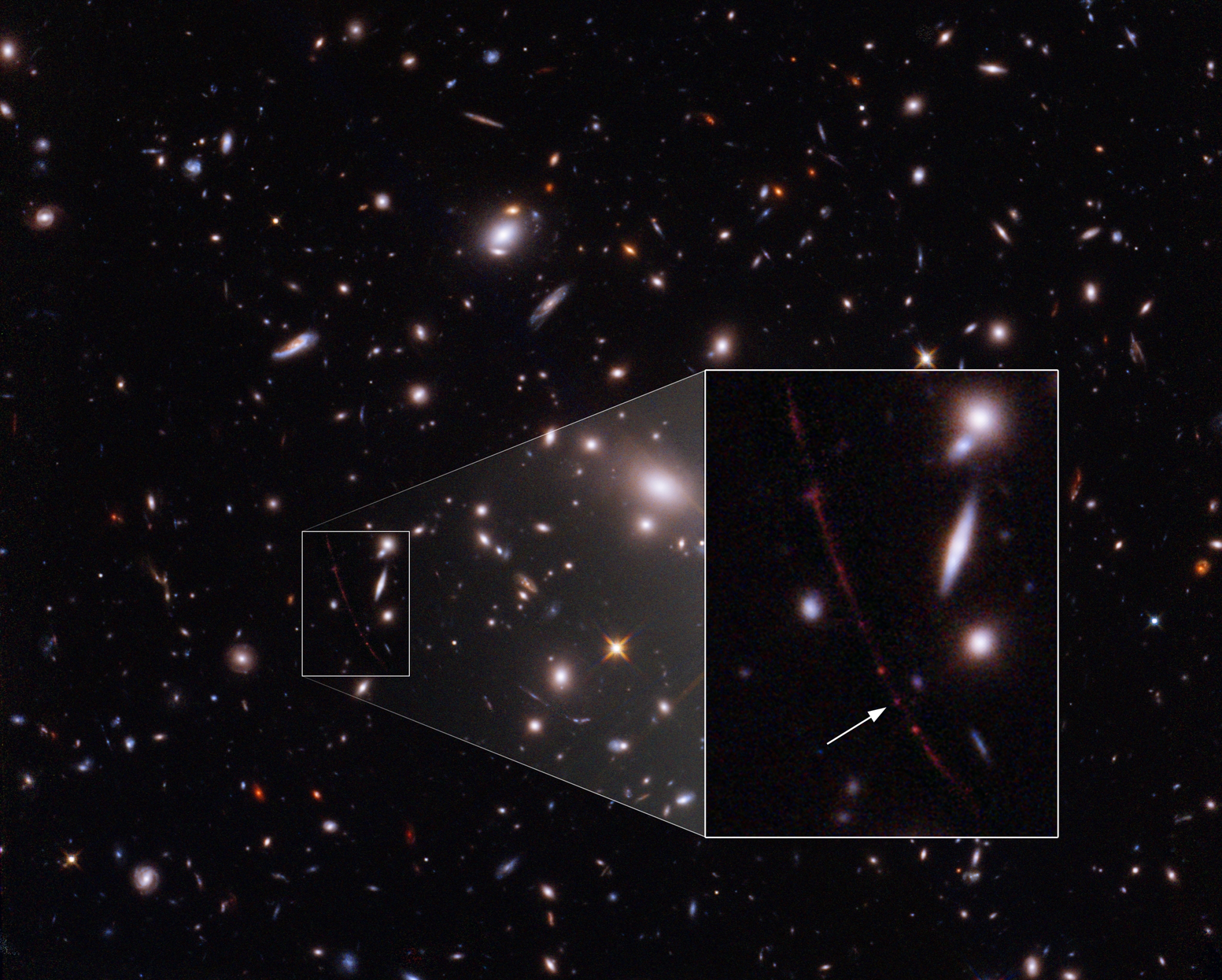[천문뉴스] 허블우주망원경이 지금까지 본 것 중 가장 멀리 있는 별을 발견 |
|||||
|---|---|---|---|---|---|
| 작성자 | 염범석 | 등록일 | 22.03.31 | 조회수 | 650 |
| 첨부파일 | |||||
|
허블우주망원경이 지금까지 본 것 중 가장 멀리 있는 별(129억 광년)을 발견. Hubble Space Telescope (HST) Finds the Most Distant Star (12.9 billion years) Ever Seen.
http://cometsky.com/astronews/astronews_20220331_hst_bsyeom.jpg The NASA/ESA Hubble Space Telescope has established an extraordinary new benchmark: detecting the light of a star that existed within the first billion years after the Universe’s birth in the Big Bang (at a redshift of 6.2) ― the most distant individual star ever seen. This sets up a major target for the NASA/ESA/CSA James Webb Space Telescope in its first year. Until now, the most distant single star detected, discovered by Hubble in 2018, existed when the universe was about 4 billion years old, or 30% of its current age.
The far-away star system takes the official name WHL0137-LS, but the astronomers who found it nicknamed it “Earendel” from the Old English word meaning “morning star” or “rising light”. Earendel’s home galaxy, the Sunrise arc, takes its name from that gravitational lensing effect that made this discovery possible.
NASA/ESA의 허블우주망원경(HST)은 빅뱅에서 우주 탄생 후 10억 년 이내(약 9억 광년)에 존재했던 별(적색이동 z = 6.2, 지구로부터 약 129억 광년)의 빛을 검출하여 특별한 새로운 기준을 세웠다. 이것은 NASA/ESA/CSA의 제임스 웹 우주 망원경의 첫 해에 주요 목표가 될 것이다. 지금까지 허블우주망원경이 2018년에 발견한 가장 멀리 떨어져 있는 단일 별은 우주 나이가 약 40억 년, 즉 현재 나이의 30%였을 때 존재했던 별이었다.
멀리 떨어져 있는 항성계의 공식 명칭은 WHL0137-LS이지만, 이를 발견한 천문학자들은 "새벽 별" 또는 "떠오르는 빛"을 의미하는 고대 영어 단어에서 "에아렌델(Earendel)"이라는 별명을 붙였다. 에아렌델의 모 은하인 선라이즈 아크(Sunrise arc)는 이 발견을 가능하게 한 중력 렌즈 효과에서 이름을 따왔다.
Large images: https://cdn.spacetelescope.org/archives/images/large/heic2203a.jpg
https://cdn.spacetelescope.org/archives/images/large/heic2203b.jpg
https://esahubble.org/images/heic2203a/
https://esahubble.org/images/heic2203b/
Nature paper : https://www.nature.com/articles/s41586-022-04449-y
https://stsci-opo.org/STScI-01FX61F3NBSQQY4K41GKAX05QD.pdf
Credit: NASA, ESA, B. Welch (JHU), D. Coe (STScI), A. Pagan (STScI).
|
|||||
| 이전글 | [천문정보] 2022년 4월의 야간 천체 관측 대상들 |
|---|---|
| 다음글 | [천문정보] 대기 분산 보정기 (ADC) |

